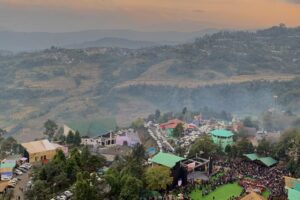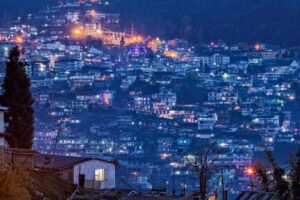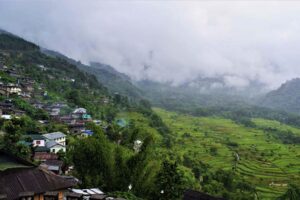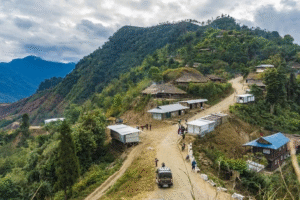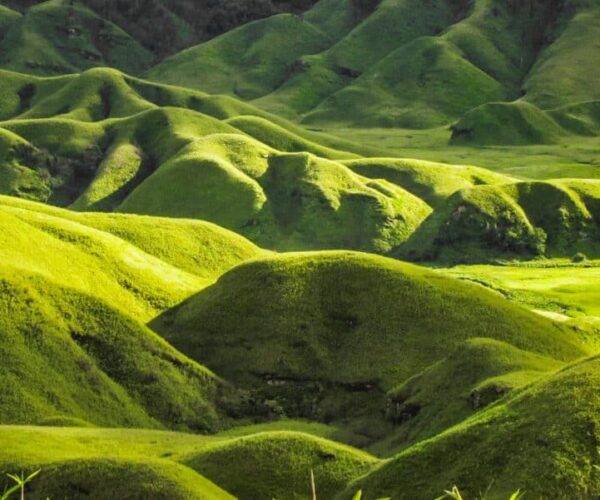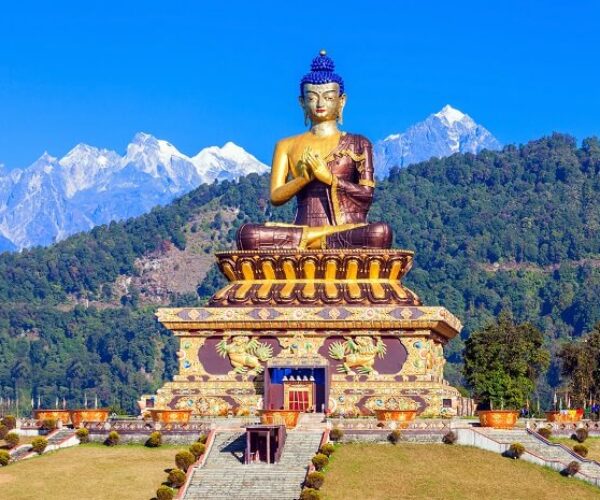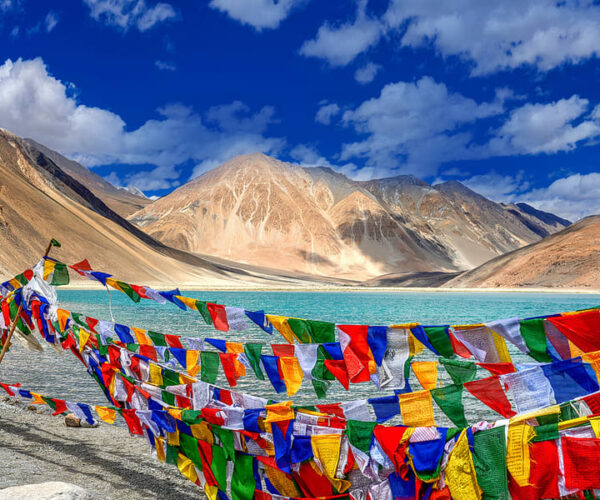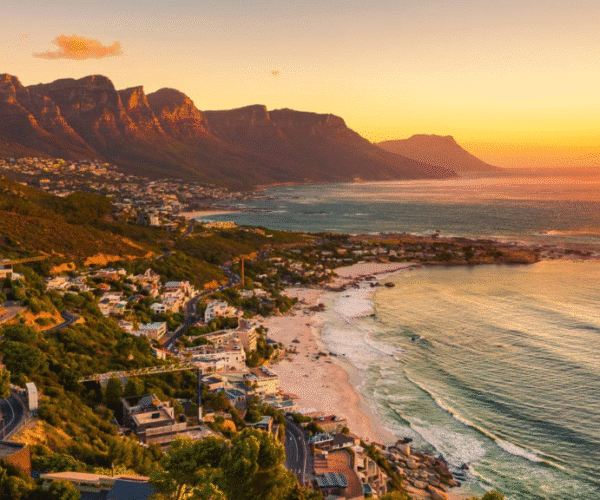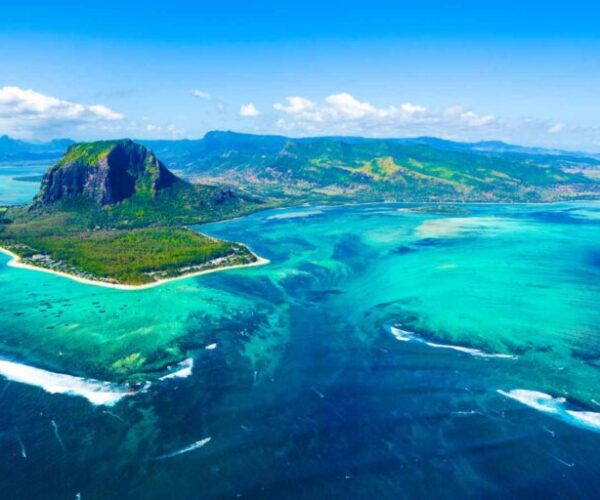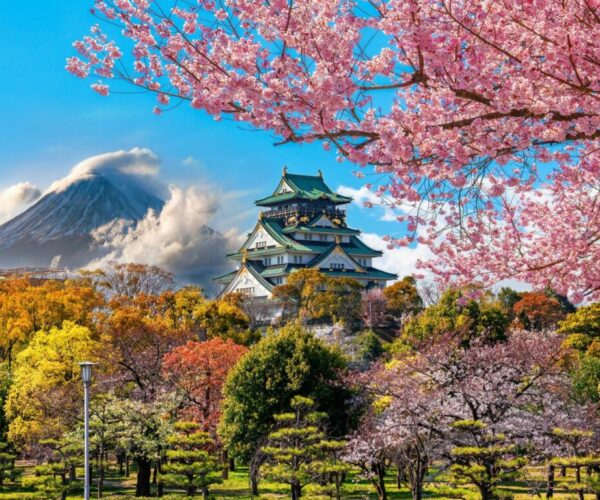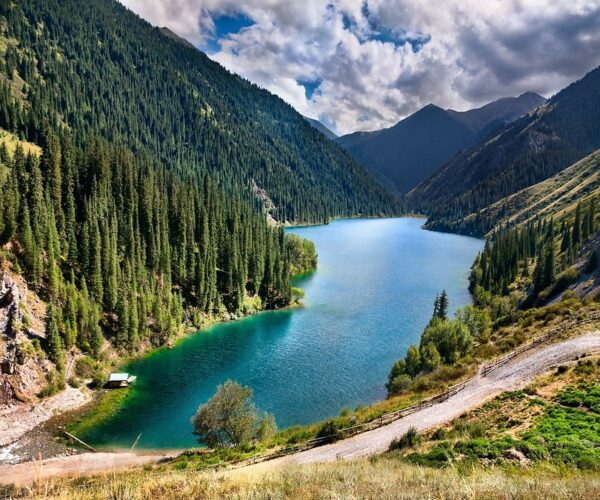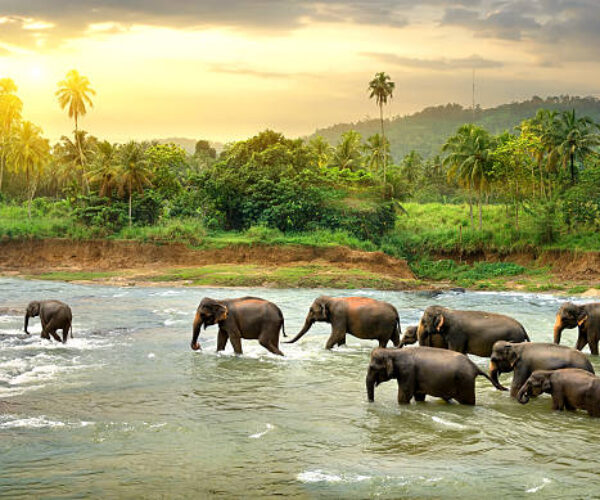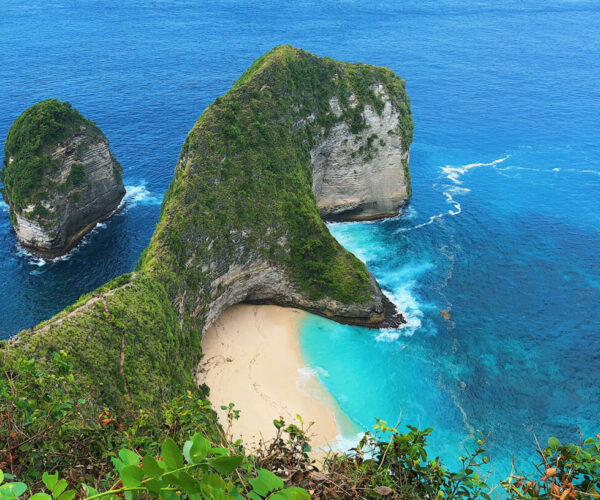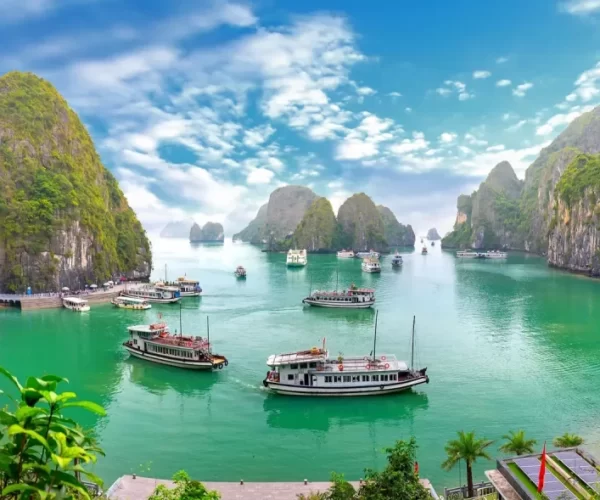Nagaland
Nagaland Tour Packages
The Land of Tribes, Valleys & Untamed Beauty
Send Us An Enquiry
Overview
Nestled in India’s remote northeast, Nagaland is a mesmerizing blend of ancient tribal cultures, mist-covered mountains, and vibrant festivals. Known as the “Land of Festivals,” it offers a raw, unfiltered glimpse into the lives of its 16 major Naga tribes, each with unique traditions, warrior legacies, and elaborate handicrafts.
Hornbill Festival
This is considered the best—and typically the most crowded—time to visit Nagaland, as it coincides with the vibrant Hornbill Festival. The festival features tribal showcases from all 16 Naga tribes, including traditional dances, warrior rituals, and sunrise log drum ceremonies, along with lively night concerts featuring indie and folk fusion music. Visitors can also savor authentic local delicacies like smoked pork, bamboo shoot curry, and rice beer, making it a truly immersive cultural experience.
Mon: Land of the Konyak Tribe
Mon District, located in the northeastern state of Nagaland, India, is renowned for its rich cultural heritage and picturesque villages. Among these, Longwa Village stands out uniquely as it straddles the international border between India and Myanmar, with the village chief’s house situated such that one half lies in India and the other in Myanmar.
Key Attractions:
- Longwa Village: Longwa Village, located in Nagaland’s Mon District, is uniquely situated on the India-Myanmar border, with the village chief’s house straddling both countries. Inhabited by the Konyak Naga tribe, known for their rich cultural heritage, Longwa’s residents have historically enjoyed the ability to move freely across the border, reflecting the village’s intertwined cultural and geographical identity.
- Shangnyu Village: Shangnyu Village, located in Nagaland’s Mon District, is a prominent settlement of the Konyak Naga tribe, renowned for its rich cultural heritage and traditional practices. The village is particularly notable for the Angh’s (chief’s) house, believed to be over 500 years old, and a unique wooden monument measuring 8 feet in height and 12 feet in width, adorned with intricate carvings of human figures and other motifs, which local legends attribute to divine craftsmanship.
Dimapur: The Gateway
Dimapur, the largest city in Nagaland, serves as the state’s commercial hub and gateway, blending ancient heritage with modern vibrancy. Notably, it houses the 13th-century Kachari Ruins—mysterious mushroom-domed pillars that reflect the legacy of the Kachari Kingdom.
Key Attractions:
- Kachari Ruins: The Kachari Ruins in Dimapur, Nagaland, are a collection of ancient mushroom-domed pillars dating back to the 10th century, constructed by the Dimasa Kachari Kingdom. These enigmatic structures, believed to have served ceremonial or ritualistic purposes, stand as a testament to the region’s rich historical and architectural heritage.
- Diezephe Craft Village: Diezephe Craft Village, located approximately 13 kilometers from Dimapur in Nagaland, is a vibrant hub of traditional Naga arts and crafts, where skilled artisans specialize in handloom weaving, wood carving, and bamboo work. Visitors can immerse themselves in the rich cultural heritage by participating in workshops, exploring the Diezephe Craft Museum, and experiencing the village’s commitment to sustainability through practices like annual tree planting initiatives.
Kohima: The Heart of Naga Culture
Kohima, the capital of Nagaland, is a scenic hill city known for its rich tribal heritage and historic significance. It is famously home to the Kohima War Cemetery, commemorating soldiers who died in the pivotal Battle of Kohima during World War II.
Key Attractions:
- War Cemetery: The Kohima War Cemetery is a solemn memorial dedicated to the Allied soldiers who lost their lives in the fierce Battle of Kohima in 1944 during World War II. Set against the backdrop of lush hills, it features beautifully maintained graves and the famous inscription: “When you go home, tell them of us and say, for your tomorrow, we gave our today.“
- Kisama Heritage Village: Kisama Heritage Village, located approximately 12 kilometers south of Kohima in Nagaland, is a cultural complex designed to resemble a traditional Naga village, featuring morungs (youth dormitories) representing the state’s various tribes. Serving as the main venue for the annual Hornbill Festival held every December, the village offers visitors an immersive experience into the rich traditions, crafts, and performances of Nagaland’s diverse ethnic communities.
Khonoma: Asia’s First Green Village
Khonoma, a 700-year-old Angami Naga village located about 20 km west of Kohima in Nagaland, is renowned for its rich cultural heritage and historical significance. In 1998, the village established the Khonoma Nature Conservation and Tragopan Sanctuary (KNCTS) to protect the endangered Blyth’s tragopan and other wildlife, leading to its recognition as India’s first green village in 2005.
Dzükou Valley
Dzükou Valley, situated at an elevation of approximately 2,452 meters on the border of Nagaland and Manipur, is renowned for its rolling hills, seasonal wildflowers, and pristine landscapes. Often referred to as the “Valley of Flowers” of the Northeast, it offers a tranquil retreat for trekkers and nature enthusiasts seeking serenity amidst breathtaking natural beauty.
Mokokchung
Mokokchung is a picturesque hill town in Nagaland known as the cultural hub of the Ao Naga tribe. The town offers a perfect blend of natural beauty, colonial charm, and deep-rooted tribal traditions. Visitors can explore nearby heritage villages like Ungma and Mopungchuket, where age-old customs and folk tales still thrive. With its welcoming locals and stunning vistas, Mokokchung offers a truly immersive experience into Nagaland’s cultural soul.
Dzuleke
Dzuleke is a peaceful Angami Naga village located about 40 km from Kohima, known for its pristine natural beauty and strong community-led eco-tourism efforts. With limited connectivity, cozy homestays, and rich wildlife like the Blyth’s tragopan and barking deer, it offers a perfect off-the-grid experience for those seeking nature and authentic village life.
Kisama
Kisama Heritage Village, located about 12 km south of Kohima, is a vibrant cultural site showcasing 16 traditional morungs, each representing a different Naga tribe. It is famously known as the venue for the annual Hornbill Festival, where tribes come together to celebrate with dance, music, crafts, and traditional games.
Nagaland Through The Seasons:
The best time to visit Nagaland is during the winter and spring months, from October to May, when the weather is cool, pleasant, and ideal for sightseeing and cultural experiences. December is especially popular due to the Hornbill Festival, which showcases the rich traditions and tribal heritage of the state.
Getting There
By Air:
Dimapur Airport (DMU) is the primary air gateway to Nagaland, offering convenient access to the state. For those traveling to Mon Village, an alternative route is via Dibrugarh, which provides better connectivity to the region. Dibrugarh is well-connected to other states in India by air, rail, and road. You can fly directly to Mohanbari Airport in Dibrugarh from cities like Delhi, Kolkata, and Guwahati, or take long-distance trains such as the Rajdhani Express or Brahmaputra Mail that link Dibrugarh to major Indian cities.
Dimapur Airport (DMU) offers regular direct flights to cities like Kolkata and Guwahati. With one-stop connections, you can reach Dimapur from Delhi, Mumbai, Bangalore, and other metros via layovers in Kolkata or Guwahati.
Alternatively can fly to Guwahati and take a train to Dimapur.
By Road:
Dimapur is the nearest railway station to Nagaland and is well-connected by road to major cities across the region, providing convenient access for travelers.
Main cities like Kohima are not connected by train so ppl need to reach Dimapur and go by taxi or private cab only.
Local Transportation Within Nagaland:
Local transport in Nagaland primarily includes shared taxis, private cabs, and buses connecting towns and villages. While public transportation is limited in remote areas, shared sumos and jeeps are a common and affordable way to travel between districts and to rural locations. In cities like Dimapur and Kohima, auto-rickshaws and local taxis are readily available for short-distance travel.
Stay and Dining
Nagaland offers a range of immersive and culturally rich accommodations, blending rustic charm with modern conveniences. Expect:
Homestays in Tribal Villages : Live with Naga families sleep in bamboo huts, and share home-cooked meals.
Eco-Camps & Tented Stays: For trekkers (Dzukou Valley, Khonoma) with basic amenities and bonfire nights.
Mid-Range Hotels: Clean, no-frills lodgings in Kohima/Dimapur Heritage Guesthouses – Colonial-era bungalows in Kohima with garden views.
Festival Glamping: Luxury tents during the Hornbill Festival (Kisama).
Food: Nagaland’s cuisine is meat-heavy, but vegetarians can still savor unique flavors:
Galho (rice stew with veggies/fermented soy)
Aikibeye (stir-fried greens with sesame)
Black Rice Kheer (sweet pudding)
Smoked Pork with Bamboo Shoot (Axone): Fiery and fermented.
Naga King Chili Chutney: Not for the faint-hearted!
North Indian food (Dal , chawal Sabji) is also available for tourists in homestays / Guesthouses/ restaurants.


